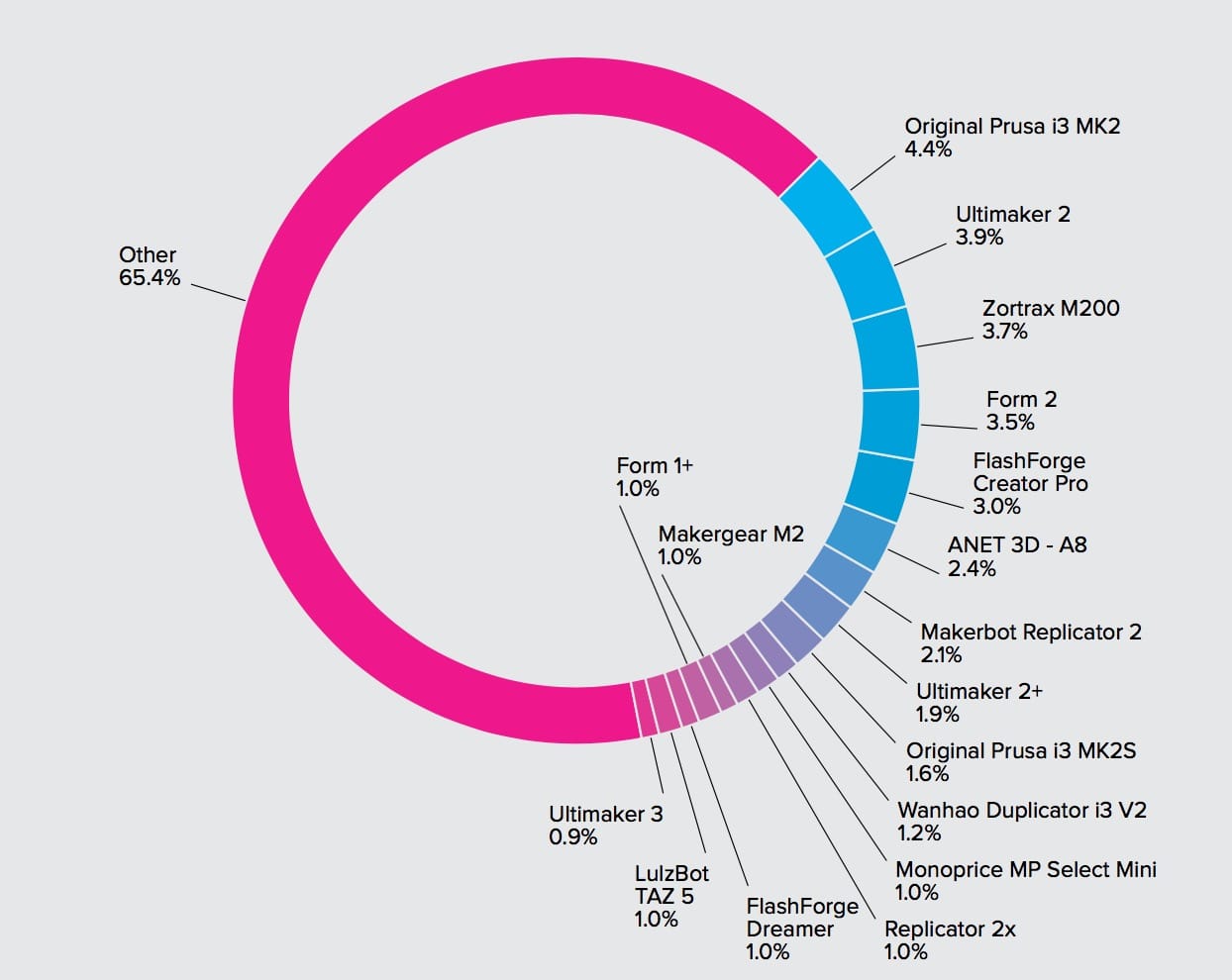
Each quarter 3D Hubs has published an extensive statistical report on 3D printer trends based on their comprehensive usage data, but this time it looks significantly different.
The report contains an analysis of the usage patterns they see passing through their worldwide network of participating 3D print services. 3D Hubs acts as a “hub” to connect those seeking prints with those with equipment for temporary hire. 3D Hubs’ service tracks all the transactions and from this they can tell us quite a bit about what’s actually going on.
In recent quarters the report seemed to stagnate somewhat, as the same results appeared each time. This time, however, 3D Hubs has chosen to significantly reorganize the report to be even more useful.
The major change is that the report now contains information regarding only their “active” hubs. These would be participating machines that are actually being used. The implication here is that 3D Hubs’ prior reports included “dead” machines that had signed up but weren’t actually being used. Now the information is based on what’s actually happened in the previous period. Much better!
Another change is that the report is now published in PDF form, rather than being simply a very long web page. And while you’ll have to provide your email address to receive a copy, the report is available at no charge – unless you are already a user in which case you can simply download it. That’s a very small price to pay to get this information.
So what’s different in the statistics? Plenty! Here’s what I observed, in no particular order:
3D Systems grabs a perfect score for all the prints done on their ProJet 3500 HDMax 3D printer, beating all other machines.
No filament-extrusion machine made the top ten highest rated list from any vendor, in spite of almost 64% of all prints using that process! All machines on the highest rated industrial 3D printer list used other 3D printing processes, including Material Jetting, SLS and SLA processes. I’m wondering what Stratasys might have to say about this. Stratasys did have several Objet machines on the list, however.
The most frequently used machine on the industrial list was 3D Systems ancient Vanguard system, a printer that is likely old enough that you could legally buy it a beer. This goes to show that if machines are reliable they will continue to be used, regardless of age.
As in previous 3D Hubs Trends Reports, the desktop highest rating index is essentially a collision of terrific machines, with the top rated machine (Original Prusa i3 MK2) at 4.90, and the 10th place machine (ANET 3D – A8) at 4.77 rating, a different of only 0.13 on their 5 point scale. There are plenty of terrific desktop machines available these days.
The most frequently used desktop 3D printer was none other than the new Formlabs Form 2, and this is not surprising given that it is an incredibly easy machine to use that produces excellent quality prints very reliably.
Speaking of older machines, the venerable MakerBot Replicator 2 is in sixth place on the most frequently used list. This machine was announced in 2013 – FOUR YEARS AGO! The fact that this machine is still well used (and we still use ours) after such a long time with so many innovations occurring since then, shows what a wonderful design it was at the time.
The Trending list of desktop machines now shows machines that have appeared in the past quarter, making the information far more relevant. In this report, we can see that the Original Prusa i3 MK2S is rocketing skyward with an increase of an astonishing 1970% in the quarter. Josef Prusa told us they had taken on an additional 90 staff to keep up with the 3,000+ orders they receive each month, and this statistic demonstrates the truth in that statement. And that was January, by the way – I would not be surprised if Prusa’s monthly run rate is a lot higher now.
The three leading vendors, according to 3D Hubs, are Ultimaker (10.3%), Prusa Research (6.0%) and MakerBot (5.3%), who top the active machine counts this quarter. What’s surprising is that MakerBot does not have ANY of their more recent equipment on the top ten lists, suggesting that their third place position may be in jeopardy in the near future.
There’s much more in this highly interesting report, and I encourage you to take a look yourself.
Finally, in case you were wondering, Black has overtaken White as the most popular 3D print material color. Hooray!
Via 3D Hubs

